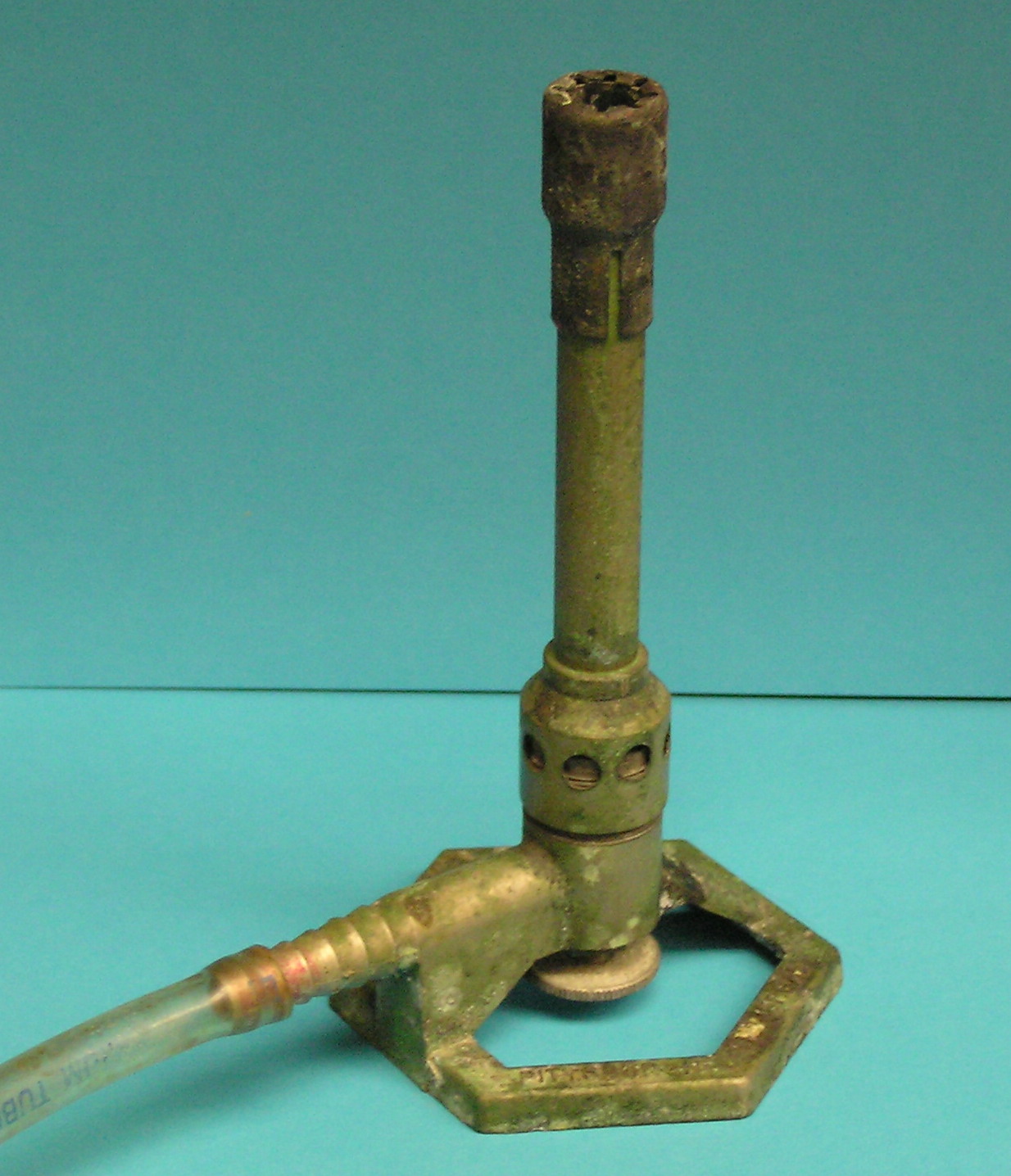
Bunsen Burner:

The Bunsen burner is the work horse heat source for most experiments in the lab. It consists of a propane source mixed with atmospheric oxygen to produce a flame. In principle it is no different than a portable lighter.
It contains four control surfaces.
At the gas source is a spigot like handle which can be used to control the rate at which the gas is flowing.
At the bottom is a needle valve which controls the gas inlet prior to combustion.
Just above it is a rotatable valve which can be used to control the amount of oxygen, (air), permitted to flow into the combustion mixture and functions like a carburetor.
At the top is a rotatable valve which controls the width of the opening and the height of flame.
These four controls are used to adjust the height of the flame and more importantly, the efficiency of the combustion.
A yellow to orange single zone flame indicates an incomplete combustion and cool flame, which is inefficient in heating. Many experiments have taken an inordinate amount of time based on the fact the burner was not transferring heat effectively. The color results from incandescent particles of carbon in the form of soot, which have not been converted to CO2.
A two zone bright blue interior flame, and dark blue nearly invisible outer zone indicates an efficient combustion, which will greatly aid in performing experiments correctly.